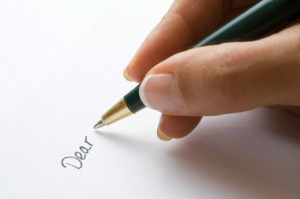Etiquette of “Dear”
Or do you prefer “Dear Readers”?
Last week I came across an article in the BBC that asks the question, “Should e-mails open with Dear, Hi, or Hey?” An interesting question that, it seems, is still up for debate.
According to an online poll conducted by the Wall Street Journal, about 41 percent of 500 voters sided with “Dear” as the proper opening in every case. The rest thought otherwise, splitting between “Too formal, dated, effeminate or intimate” and “It depends,” voting 25 and 33 percent, respectively. Overall, the largest segment still thought “Dear” was the proper way to conduct business. But I have a hunch the results of this poll would have yielded much different results 20 or even 10 years ago. Times have changed, and so too, it would seem, have people’s perception of business etiquette. This may be a generational gap.
If you’ve read Ron Alsop’s book, “The Trophy Kids Grow Up: How the Millennial Generation Is Shaking Up the Workplace,” you already know there are some major differences in how the newer generations view the workplace and business world. In short, the book discusses the Millennial workforce and how its sense of entitlement and self-appreciation demands that the workplace conform to their vision of the world, rather than vice versa. Being a Millennial myself, I have had access to e-mail most of my life and have often used it to pass a note, reminder or other quick message to someone. In a way, it’s a slower version of a text or instant message. Why, then, should my e-mail begin with “Dear” when it contains a sentence or two?
Because, if you want to be taken seriously as a professional, that’s how business is done. At least, that is a common argument from those older and a bit more experienced in the workplace. E-mail is a one-way communication through which you depend on your writing alone to convey ideas and emotions.
Of course, as a relationship becomes closer, you may find yourself getting more comfortable with the idea of skipping the formalities. At that point, you have to play by it ear.
A third option is to go with the middle ground. If you feel uncomfortable with using “Dear” because it feels too formal or intimate, you can try using a time-based greeting. “Good afternoon” or “Good morning” is perfectly acceptable and implies a sense of formality without being overly formal; just make sure your greeting corresponds to the time of day!
Ultimately, in business, how you like to correspond doesn’t really matter. What really matters is the way in which your recipient wants to be addressed. Formal salutations have been used for centuries, and even though it’s the new millennium, they still have their place in the business world. Perhaps, sometime in the future, “Dear” will no longer be used to greet recipients. After all, when’s the last time you used it when texting someone? But there are many, 41 percent according to the Wall Street Journal poll, who think it needs to stay.
If you really prefer to drop the formality, here’s my advice: don’t stick your neck out first. Let others make the first move and go from there.


